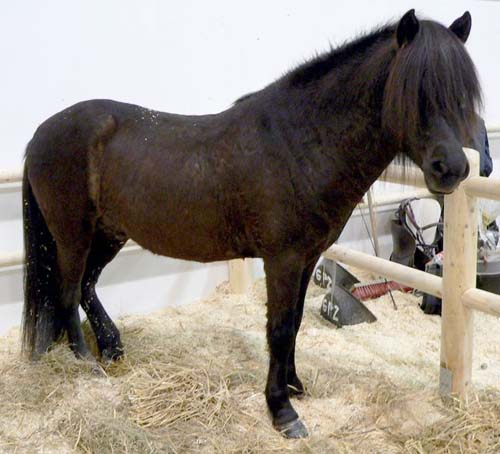
The Altai horse is one of the most ancient breeds of horses found in the world. The breed has an average height of 13.2 hands. They are very sturdy and can endure harsh weather conditions. The Altai horse has a large head which is also coarse in nature. They have a relatively short neck. The back of the Altai horse is long and dipped slightly. The Altai horses have well developed lungs, muscles, tendons and heart in order to help them traverse in the mountainous regions without any hassles. The legs of these horses are short but are very strong. They can nimbly travel over mountain trails which are steep and also across rapidly moving rivers and streams. The Altai horses are very hard working and it does not take a great deal of effort to care for these gentle creatures.
Size
13.2 hands
Colours
The most common colors among the Altai horse are gray, bay, chestnut and black. One of the most rarely seen type is the leopard pattern Altai horses that have black spots like that of a leopard.
Suitable for
he Altai horses are mainly used to transport people and other heavy goods from one place to the other in harsh terrains. They are also used as riding horses. The meat of the Altai Horse is consumed by certain people too.
History
The Altai horse is one of the oldest breeds of horses in the world found in Siberia. These horses have been extensively bred and raised by the nomadic people and tribesmen living in the hilly regions of this place because these horses are extremely strong and have great endurance powers. They have adapted themselves to harsh climatic conditions of Siberia and the other mountainous regions. They have become an indispensible part of the lives of the people living here. People rely on them to a great extent as the most effective means of transport from one place to another. They can also carry heavy burdens with ease and traverse quickly in the most difficult terrains too. Initially all the Altai horses were pure blooded, however, in recent years there has been a certain amount of cross breeding that has taken place.
:max_bytes(150000):strip_icc():format(webp)/what-horses-eat-that-keep-them-healthy-1886504-FINAL-5ba8dd3746e0fb0025eb2cb4.png)
:max_bytes(150000):strip_icc():format(webp)/horse-eye-resized-56a4dbf03df78cf77284fe95.jpg)
:max_bytes(150000):strip_icc():format(webp)/Horse-grooming-GettyImages-495726400-5876f27d5f9b584db351222e.jpg)
:max_bytes(150000):strip_icc():format(webp)/close-up-of-hand-holding-parrot-705172843-5b52bc4ec9e77c0037b6e5a4.jpg)
:max_bytes(150000):strip_icc():format(webp)/GettyImages-579524112-5c77331146e0fb000140a3a6.jpg)
:max_bytes(150000):strip_icc():format(webp)/budgerigarsonrope-331834_1920-5b628213c9e77c00255b32bc.jpg)
:max_bytes(150000):strip_icc():format(webp)/GettyImages-106887241-58325bc03df78c6f6a9a2ed2.jpg)
:max_bytes(150000):strip_icc():format(webp)/GettyImages-878015800-06106157c9d34a2081db4abcae8699b1.jpg)
:max_bytes(150000):strip_icc():format(webp)/hungry-cat-57b72fac5f9b58cdfda11a62.jpg)


:max_bytes(150000):strip_icc():format(webp)/4374985466_59c7f6545b_o-8b4f24f2f3e544349fe537fde58cfad0.jpg)
:max_bytes(150000):strip_icc():format(webp)/GettyImages-9298737261-500c5a2fba4248f89d1c17a33bf438f7.jpg)
:max_bytes(150000):strip_icc():format(webp)/veterinarian-and-owners-examining-dog-in-vet-s-surgery-164853745-dbecbdb691d549d79487d84356920cf4.jpg)